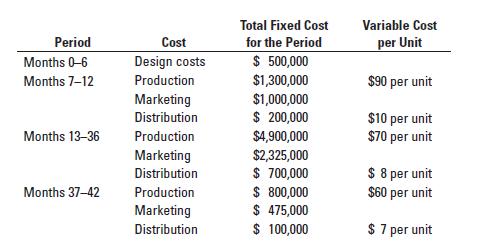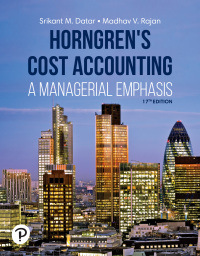Jurgensen Manufacturing, Inc., plans to develop a new industrial- powered vacuum sweeper for household use that runs
Question:
Jurgensen Manufacturing, Inc., plans to develop a new industrial- powered vacuum sweeper for household use that runs exclusively on rechargeable batteries. The product will take 6 months to design and test. The company expects the vacuum sweeper to sell 10,000 units during the first 6 months of sales; 20,000 units per year over the following 2 years; and 5,000 units over the final 6 months of the product’s life cycle. The company expects the following costs:

Required
Ignore time value of money.
1. If Jurgensen prices the sweepers at $375 each, how much operating income will the company make over the product’s life cycle? What is the operating income per unit?
2. Excluding the initial product design costs, what is the operating income in each of the three sales phases of the product’s life cycle, assuming the price stays at $375?
3. How would you explain the change in budgeted operating income over the product’s life cycle? What other factors does the company need to consider before developing the new vacuum sweeper?
4. Jurgensen is concerned about the operating income it will report in the first sales phase. It is considering pricing the vacuum sweeper at $425 for the first 6 months and decreasing the price to $375 thereafter. With this pricing strategy, Jurgensen expects to sell 9,500 units instead of 10,000 units in the first 6 months, 19,000 each year over the next 2 years, and 5,000 over the last 6 months. Assuming the same cost structure given in the problem, which pricing strategy would you recommend? Explain.
Step by Step Answer:

Horngrens Cost Accounting A Managerial Emphasis
ISBN: 9780135628478
17th Edition
Authors: Srikant M. Datar, Madhav V. Rajan





